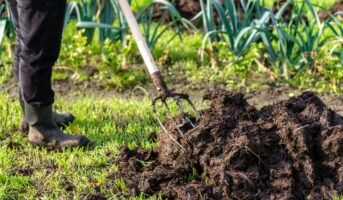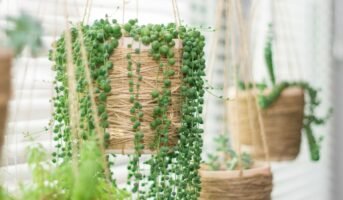Beyond the common perception of tomato plants, there is a fascination with growing tomato trees. Tomato trees, indeterminate or vining, are fascinating gardening projects. In this investigation, we’ll delve deeper into the traits of tomato trees, the subtleties of their upkeep, possible advantages, and extra advice for growing tomatoes successfully.
Characteristics of tomato trees
Tomato trees bear fruit all during the growing season because of their unpredictable development. When the plant ages, its core stem branches out and grows higher, giving it a characteristic tree-like look. Tomato trees may be grown in a variety of ways. Examples of these include the traditional “Brandywine” and the unusually purple “Indigo Rose.”
Key facts: Tomato trees
| Botanical Name | Solanum Lycopersicum |
| Common Names | Tomato, Tomato Plant |
| Family | Solanaceae |
| Native Area | Western South America |
| Plant Type | Annual or short-lived perennial, typically grown as a vine or bush |
| Mature Size | Varies by cultivar, typically 3-10 feet in height |
| Sun Exposure | Full sun |
| Soil Type | Well-drained, fertile soil |
| Flower Size | Small, yellow flowers |
| Flower Color | Yellow |
| Toxicity | Generally non-toxic; fruits are edible and widely consumed |
Cultivation of tomato trees
Variety selection
Go for tomato cultivars that can develop into trees. “Yellow Pear” brings a splash of colour to the garden and “San Marzano” is well known for its usage in sauces.
Starting from seeds
Before the growing season, start the cultivation process indoors with seeds. This makes it possible to get a head start and have more control over the surroundings.
Transplanting seedlings
Once the seedlings are large enough, place them in pots or gardens with well-prepared soil, making sure to space them appropriately for best development.
Support structures
As soon as the plant begins to develop, construct strong support structures. Stakes, trellises, or tomato cages offer the essential support to keep the plant from spreading out.
Pruning practices
To control tomato tree development, prune them on a regular basis. Trim off any overbearing side branches, keeping in mind to preserve the centre stem and promote upward growth.
Mulching benefits
Mulch the area surrounding the base of the plants to control temperature, prevent weed growth, and preserve soil moisture.
See also: How to grow and care for Yuzu fruit?
Ideal growing conditions
- Sunlight requirements: Full sun is ideal for tomato growth. Make sure they get 6 to 8 hours of direct sunshine every day to promote healthy growth and maximum fruit yield.
- Soil considerations: Choose soil that drains well and has a pH that is between neutral and slightly acidic. Adding organic matter to the soil improves its nutritional content.
- Watering practices: Apply regular watering, particularly while the plant is in the blooming or fruiting period. To avoid soggy circumstances, water the soil thoroughly and let it dry out a little bit between applications.
- Temperature tolerance: Tomatoes prefer warm temperatures.
- Spacing guidelines: Tomato trees should be spaced enough apart to allow for proper air circulation and lower disease risk. In addition, proper spacing reduces competition for resources and crowding.
Benefits of growing tomato trees
- Homegrown versatility: Beyond the delight of harvesting, homegrown tomatoes are versatile in terms of what they may be used for in the kitchen, from fresh salads to handmade salsas and sauces.
- Gardening satisfaction: Gardeners have a sense of success and fulfilment when they witness tomato trees develop and yield a lot of fruit.
- Cost-effective yield: If you select tomato types that suit your cooking style, growing your own tomatoes may be less expensive than frequently buying them.
- Teaching opportunity: By including kids or avid gardeners in the growing process, you may impart knowledge about plant life cycles, maintenance, and the delights of homegrown products.
Tips for growing healthy tomato trees
Fertilisation routine
To encourage healthy development, establish a regular schedule for fertilisation. Use a balanced fertiliser that contains all the necessary nutrients, such as potassium, phosphorus, and nitrogen.
Determinate varieties for containers
Consider determinate tomato types if you plan to cultivate in containers. Due to their more compact growth habit, these cultivars are suitable for small places.
Companion planting
Investigate companion planting techniques to improve tomato plants’ health and productivity. Pest-repelling plants include nasturtiums, marigolds, and basil are best suited for this purpose.
Harvesting techniques
To get the finest flavour, select tomatoes when they are completely ripe, using correct harvesting methods. Consistent fruit yield is also encouraged by regular picking.
Disease vigilance
Keep an eye out for symptoms of prevalent tomato diseases, such late or early blight. Risks can be reduced by taking quick action, such as removing diseased leaves and planting disease-resistant cultivars.
See also: How to grow and carе for Chilli plants?
Advanced techniques for tomato tree cultivation
Topping for controlled height
Considering “topping” or pinching off the top growth of a tomato tree after it reaches a desirable height is one way to achieve controlled height. This promotes lateral development and restrains vertical expansion.
Layering for additional roots
Try layering methods, such as burying a branch in the ground to promote the growth of more roots. This can improve the stability and absorption of nutrients by the plant as a whole.
Greenhouse cultivation
If you have access to a greenhouse, you might want to think about cultivating tomato trees in a regulated setting. Growing plants in greenhouses prolong the growth season and offer shelter from bad weather.
Hydroponic systems
Investigate hydroponic tomato growing technologies, which provide you exact control over ambient conditions and fertiliser levels. The total yield and growth rates can be improved using hydroponics.
Integrated pest management (IPM)
Use IPM techniques to manage pests without using a lot of chemicals. Predatory beetles and ladybugs are examples of beneficial insects that can aid in controlling pest populations.
Season extension techniques
To protect tomato trees from early or late-season temperature extremes and extend the growth season, use season extension techniques like cold frames or row covers.
Tomato tree: Toxicity
Solanum Lycopersicum or the tomato tree is generally considered non-toxic. Tomatoes are a typical food in many parts of the world, and the plant and its fruit are safe for human ingestion. Individual responses might differ, though, so those who have specific allergies or sensitivities should proceed with caution. Tomatoes are safe for humans, but some pets may react negatively, particularly dogs and cats. A veterinarian should always be consulted regarding the safety of plants near pets.
FAQs
Can I grow tomato trees in containers?
Yes, many tomato varieties, including those suitable for tree-like growth, can thrive in containers. Opt for determinate varieties for more compact growth in limited spaces, and ensure the containers have proper drainage.
How do I prevent common tomato diseases in tomato trees?
Preventing common tomato diseases involves practising good garden hygiene. Ensure proper spacing between plants for adequate air circulation, use disease-resistant varieties, and promptly remove any affected leaves. Consider applying organic fungicides preventatively.
What is the difference between determinate and indeterminate tomato varieties?
Determinate tomato varieties have a more compact growth habit and reach a predetermined height, making them suitable for containers or smaller garden spaces. Indeterminate varieties, often referred to as tomato trees, continue to grow and produce fruit throughout the growing season.
When is the best time to harvest tomatoes from trees?
The best time to harvest tomatoes is when they are fully ripe and have developed their full colour. Gently squeeze the tomato; if it yields slightly to pressure, it's ready to harvest. Regular harvesting encourages continuous fruit production.
How can I protect tomato trees from pests without using chemical interventions?
Integrated Pest Management (IPM) strategies can help control pests naturally. Introduce beneficial insects such as ladybugs and predatory beetles, use companion planting techniques with pest-repelling plants, and regularly inspect plants for early signs of pest infestation.
| Got any questions or point of view on our article? We would love to hear from you. Write to our Editor-in-Chief Jhumur Ghosh at [email protected] |
Anil Shah, is your go-to source for property market insights. He excels at understanding and explaining the latest trends in residential real estate and making complex real estate concepts easier to grasp. Anil’s fact-based analysis helps buyers and investors make sound decisions in the housing sector.












